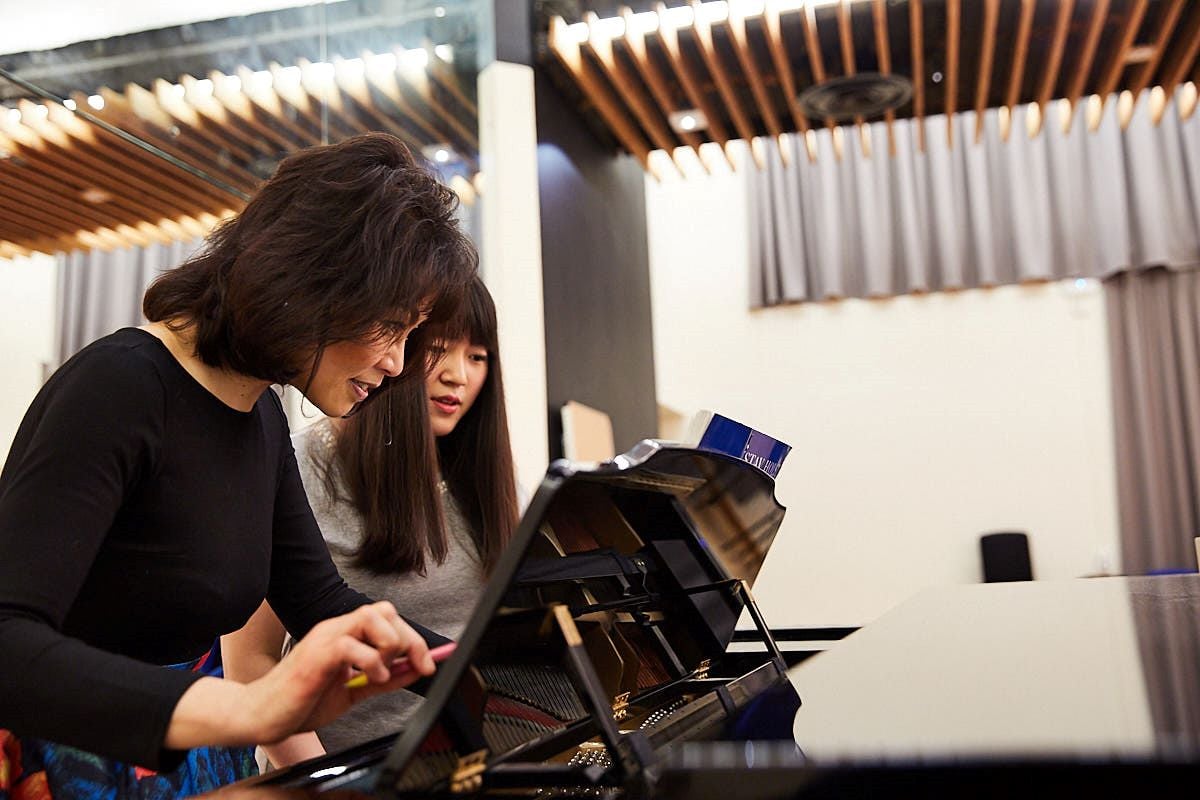
Photo: Paul Cochrane
Can ‘artistic citizenship’ be taught?
When asked if the performing arts should simply entertain or whether they have a higher social calling, Jonathan Vaughan is very clear. If the arts are to thrive and remain relevant, they have to do both.
I went to a local comprehensive in a heavily industrialised coal mining town. I am forever grateful that an accident of fate forged my career: I was given free music lessons. The grim realities of mining and its economic uncertainties shaped the whole community.
That large cohorts of children in 1970s Leicestershire would transcend those circumstances through free music education – some going on to become eminent in the profession – left a lasting mark on me.
The democratic provision of arts education can and should bring about transformational change in people’s lives.
The arts are not exclusively about expressive beauty but are visceral manifestations of our sense of justice, courage, resistance, imagination and empathy. Their ability to change the world is what has inspired my doctoral studies and prompted me to ask how institutions – like Guildhall School – might train performing artists differently; not simply to entertain, but as critical thinkers, wholly engaged in the challenges of their societies. It’s a concept called 'artistic citizenship'.
Traditional models of arts training are inadequate
The arts bring joy, express sorrow in times of grief and give meaning when words fail us. They have extraordinary power over our physical and mental well-being, which science is only just beginning to comprehend.
Given their potency, there is a growing consensus amongst artists and educators that the arts must work for public good and that traditional models of arts training are often inadequate to meet this challenge.
Major disruptions to our national status quo in recent years – from the pandemic, to Brexit and the climate crisis, to the long overdue social justice sought by movements such as Black Lives Matter and MeToo – have all served to highlight the challenges of prejudice and inequality in our society.
What can artists do?
A 2018 study by the University of Colorado found that by simply visualising something, our brains are stimulated as if we had experienced it in real life. In other words, imagination is a neurological reality. Likewise, performing arts trigger emotional responses and experiences, as if the audience had lived them.
When artists question the way we live, their potency lies in the ability to engender a neurological and deeply emotional response in us. It’s no accident that the arts have been censored throughout history. They are a powerful weapon for mobilising change.
Consider Marcus Rashford – a working class footballer whose childhood poverty led him to use his platform as an elite sportsman to bring about a U-turn in government policy on free school meals. If Rashford can do that, shouldn’t artists also use their platforms to create a better world?
Defining artistic citizenship, the academic David Elliott takes Aristotle’s concept of Praxis (‘to do’ or ‘to make’) and expands it to mean active reflection and action“dedicated to human well-being… the ethical care of others, and the positive empowerment and transformation of people and their everyday lives”.
Citizenship is about shared values and common principles of benefit to the community. Artistic citizenship, therefore, is not just about the skills required to work in schools, hospitals and community settings. It can also be about disruption and activism.
Art Historian and dramaturg, Ana Vujanovic, calls for “art as bad public good”, inviting artists to challenge orthodoxy and convention as catalysts for genuine public good. Soprano Julia Bullock’s song cycle History’s Persistent Voice highlighting the words, work and experiences of Black American artists, and Liz Lerman’s community dance projects Shehechianu and Hallelujah, focusing on healing and reconciliation, are both fine examples of the artist as disruptor.
What are the ‘critical indicators?
As the Principal of a conservatoire, I’m interested in how training institutions are responding to this shift. My research examines what elements of artistic citizenship training exist at 24 international conservatoires. Initial findings are encouraging and provide evidence of a widespread awareness of institutions’ civic responsibility, with social value and practice embedded in their programmes.
It has clear that institutions that challenge students to think about the society in which they will work are providing complementary areas of study in liberal arts, critical thinking, civil rights, politics and culture, psychology and sociology. These tend to be set within larger universities or colleges.
I have also derived a list of ‘critical indicators’ that begins to define the skills and personal attributes students will need to operate successfully as artistic citizens. These will help to define a new curriculum for Guildhall.
Redefining training for a new generation
Questions remain about how to include this training in an already busy, arguably overcrowded, curriculum. Where does it fit when the primary imperative of performance training must always be the production of outstanding performers who excel in their craft and artistry?
How can institutions avoid indoctrinating their students when introducing political or ideological concepts? Can the development of students’ independent critical thinking avoid that? And is the very concept of citizenship problematic or limiting to those it excludes?
Halfway through my doctoral journey, I hope my findings will answer some of these questions and redefine training for a new generation of artists, equipping them with the skills and appetite to intelligently engage with society and define their own lives as artistic citizens.
Professor Jonathan Vaughan is Principal of Guildhall School of Music & Drama.
![]() @JonathanVaugha2 | @guildhallschool
@JonathanVaugha2 | @guildhallschool
Join the Discussion
You must be logged in to post a comment.